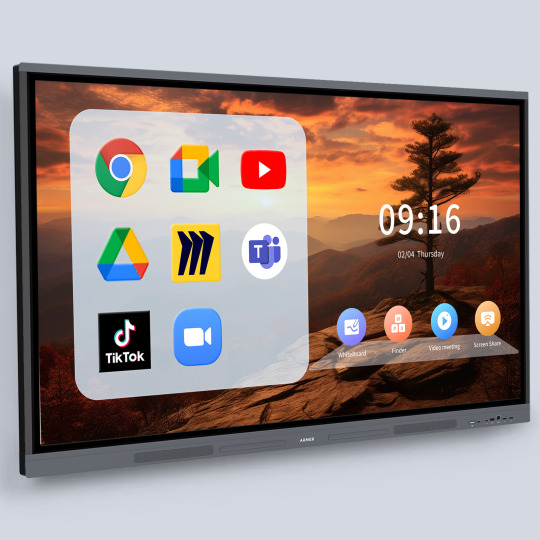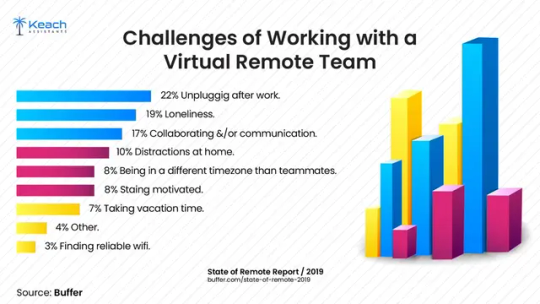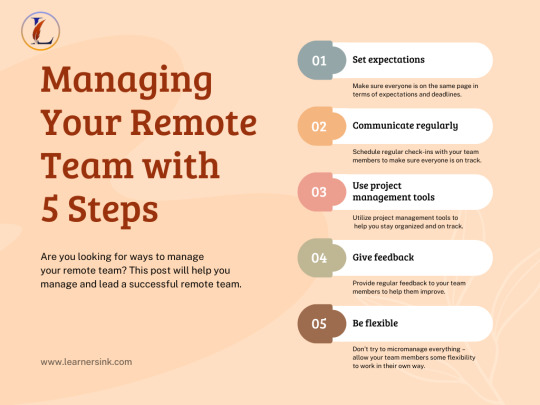#remotecollaboration
Explore tagged Tumblr posts
Text

A smart whiteboard suitable for education and business, which can be used in multiple scenarios, greatly improving efficiency
#smartboard#smartwhiteboard#interactivewhiteboard#videoconference#remotevideo#remotecollaboration#tvshow#tablet#projectorscreen#touchscreen#displaydesign
2 notes
·
View notes
Photo

Balancing Innovation and Stability in Digital Transformation
#AIinconsulting#balancinginnovationandstabilityindigitaltransformation#BärbelWetenkamp#BusinessInnovation#Claruna#digitalconsulting#LeonPalafox#remotecollaboration#SwissQuality
0 notes
Text
What is the Electronic Signature Agreement and 17 Benefits for Managers
0 notes
Text
Enhance Your Meetings with Wireless Conference Solutions

In today's fast-paced world, seamless communication is essential for successful meetings, and wireless conference cameras and video conference solutions are key to achieving this. Whether you're in a conference room, boardroom, or any collaborative space, wireless conferencing systems provide the flexibility and efficiency you need.
From wireless presentation equipment to wireless conference room displays, these solutions eliminate the hassle of cables and ensure smooth, uninterrupted presentations. A wireless video conference system offers high-quality audio and video, making remote collaboration just as effective as in-person meetings.
For optimal audio experience, consider wireless conference speakers, microphones, and headsets to enhance sound clarity. Whether you're conducting a business presentation or a virtual meeting, wireless conferencing units offer reliable, easy-to-use equipment for any setting.
Explore wireless conference room solutions from Dynamiccom.co.za to bring your meetings to the next level with modern, hassle-free technology.
#WirelessPresentationSolution#WirelessBoardroomSolutions#ConferenceRoomDisplaySolutions#WirelessConferenceSpeaker#WirelessConferenceMicrophone#WirelessPresentationSystem#RemoteCollaboration#VirtualMeetings#Dynamiccom
0 notes
Text
Empowering Hybrid Work: Microsoft Teams App Development for the Modern Workplace
Learn how Microsoft Teams app development supports the hybrid workplace model, helping teams stay connected, productive, and collaborative from any location with custom app functionalities.

0 notes
Text
Connect Seamlessly, Anytime, Anywhere! 🌍🎥

Whether for business meetings or team collaborations, our audio and video conferencing solutions provide crystal-clear audio, HD video, and easy screen sharing. Enhance productivity and connect effortlessly!
Call Now: +971 50 852 9609 Visit Us: www.emirtech.ae
#VideoConferencing#AudioSolutions#RemoteCollaboration#VirtualMeetings#SeamlessCommunication#BusinessSolutions#StayConnected#RemoteWorkTools#ConnectAnywhere#ModernWorkplace#ProductiveMeetings#HDVideo#CrystalClearAudio#CollaborationTools#UnifiedCommunications#TechForBusiness#EffortlessMeetings#GlobalConnectivity#HybridWorkplace#BusinessGrowth
0 notes
Text

Working with a virtual remote team presents unique challenges despite its many benefits. Some of the major difficulties associated with a virtual remote team include communication barriers, differences in time zones, and despite its many benefits. Therefore, it becomes a necessity to ensure productivity and collaboration through teams in a remote environment.
#virtualteam#remotework#remoteteam#workfromhome#digitalnomad#collaboration#teambuilding#remotejobs#virtualcollaboration#onlinework#remotecollaboration#workremotely#distributedteam#remoteworking#techsavvy#virtualworkspace#coworking#flexiblework#teamwork#remoteleadership#projectmanagement#cloudbased#virtualoffice#telecommuting#remoteprofessionals#worklifebalance#productivity#remoteteamwork#virtualmeetings#teamcommunication
0 notes
Text
The Future of Business: Why Virtual Backrooms Are Here to Stay
In today's rapidly evolving business landscape, the concept of the traditional office is becoming increasingly obsolete. As organizations strive to adapt to new challenges and opportunities, one trend stands out as particularly transformative: virtual backrooms. This innovative approach to business operations is reshaping how companies manage their resources, communicate, and thrive in a digital age. In this blog, we'll explore why virtual backrooms are here to stay and how they are revolutionizing the future of business.
Understanding Virtual Backrooms
Before diving into the reasons for their permanence, let's clarify what virtual backrooms entail. Essentially, a virtual backroom is a digital workspace where employees can collaborate, access resources, and perform their tasks from anywhere in the world. These platforms often integrate cloud computing, AI-driven tools, and secure communication channels to create a seamless working environment.
Enhanced Collaboration and Communication
One of the primary reasons virtual backrooms are here to stay is their ability to enhance collaboration and communication. Traditional office spaces often face limitations such as geographical constraints and rigid schedules. Virtual backrooms, on the other hand, break down these barriers by allowing team members to connect and work together in real-time, regardless of their location.
For instance, platforms like Slack, Microsoft Teams, and Zoom have become indispensable tools for businesses. They provide instant messaging, video conferencing, and file-sharing capabilities, ensuring that teams remain cohesive and productive. By leveraging these tools, companies can foster a more inclusive and flexible work culture.
Cost Efficiency and Scalability
Another compelling reason for the rise of virtual backrooms is their cost efficiency and scalability. Maintaining physical office spaces can be a significant financial burden, especially for small and medium-sized enterprises (SMEs). Rent, utilities, and maintenance costs add up quickly. Virtual backrooms eliminate many of these expenses, allowing businesses to allocate their resources more effectively.
Moreover, virtual backrooms are inherently scalable. As a company grows, it can easily expand its digital workspace to accommodate more employees and projects without the need for additional physical infrastructure. This scalability is crucial in today’s fast-paced business environment, where agility and adaptability are key to success.
Increased Productivity and Employee Satisfaction
Virtual backrooms also contribute to increased productivity and employee satisfaction. Studies have shown that remote work can lead to higher job satisfaction and reduced turnover rates. Employees appreciate the flexibility to work from home or other remote locations, which can lead to a better work-life balance.
Furthermore, virtual backrooms often include tools for project management, time tracking, and performance monitoring. These tools enable managers to keep a close eye on progress and ensure that deadlines are met. Employees, in turn, have access to everything they need to perform their duties efficiently, leading to higher productivity levels.
Security and Data Protection
In an era where data breaches and cyber threats are rampant, the security features of virtual backrooms are more important than ever. Modern virtual backroom solutions prioritize security and data protection, implementing robust encryption methods, multi-factor authentication, and regular security audits.
Businesses can rest assured that their sensitive information and intellectual property are safeguarded. This level of security is often more advanced than what many companies could achieve on their own with traditional IT infrastructure.
The Role of AI and Automation
Artificial Intelligence (AI) and automation play a significant role in the functionality of virtual backrooms. AI-powered tools can streamline routine tasks, analyze data, and provide insights that help businesses make informed decisions. Automation reduces the burden of repetitive tasks on employees, freeing them up to focus on more strategic and creative work.
For example, chatbots can handle customer inquiries, while AI-driven analytics can forecast trends and optimize operations. The integration of AI and automation in virtual backrooms not only boosts efficiency but also enhances the overall business strategy.
Conclusion: Embracing the Future with Flowres
As we have seen, the advantages of virtual backrooms are numerous and compelling. From enhanced collaboration and cost efficiency to increased productivity and robust security, virtual backrooms are here to stay. Businesses that embrace this trend are likely to thrive in the digital age, enjoying greater flexibility and resilience.
0 notes
Text
Work from Home: Maximizing Productivity and Balance in Remote Work Environments

Introduction: Embracing the Freedom of Remote Work
Understanding the Shift towards Remote Work Culture
Evolution of Remote Work Practices in Modern Society
Impact of Technological Advancements on Remote Work Opportunities
Debunking Common Myths and Misconceptions about Remote Work
Addressing Concerns Surrounding Productivity and Accountability
Exploring the Benefits of Flexibility and Work-Life Integration
Navigating the Transition: Strategies for a Seamless Shift to Remote Work
Setting Up Your Home Office for Success
Designing an Ergonomic Workspace for Comfort and Productivity
Essential Tools and Equipment for Remote Work Efficiency
Establishing Boundaries and Routines for Work-Life Balance
Creating a Daily Schedule to Maintain Structure and Discipline
Setting Clear Boundaries with Family and Roommates
Overcoming Challenges of Remote Collaboration and Communication
Adopting Effective Communication Tools and Platforms
Strategies for Facilitating Virtual Meetings and Brainstorming Sessions
Remote Productivity Hacks: Optimizing Efficiency and Focus
Time Management Techniques for Remote Workers
Implementing the Pomodoro Technique for Enhanced Focus
Prioritization Strategies to Tackle High-Impact Tasks First
Leveraging Technology to Streamline Work Processes
Automation Tools for Repetitive Tasks and Workflows
Organizing Digital Files and Documents for Easy Access
Cultivating a Mindful and Healthy Remote Work Lifestyle
Incorporating Breaks and Physical Activity into Your Daily Routine
Practicing Stress Management and Mindfulness Techniques
Remote Work Tools and Software: Enhancing Collaboration and Efficiency
Communication and Collaboration Platforms
Slack: Streamlining Team Communication and Collaboration
Microsoft Teams: Integrating Chat, Video Meetings, and File Sharing
Project Management and Task Tracking Tools
Trello: Organizing Tasks and Projects with Kanban Boards
Asana: Managing Workflows and Assignments with Ease
Cloud Storage and File Sharing Solutions
Google Drive: Securely Storing and Sharing Documents and Files
Dropbox: Collaborative File Management for Remote Teams
Remote Work Policies and Best Practices: Fostering a Positive Work Environment
Establishing Clear Remote Work Policies and Guidelines
Defining Expectations for Availability and Communication
Outlining Remote Work Security Protocols and Data Privacy Measures
Promoting Virtual Team Building and Employee Engagement
Hosting Virtual Team Building Activities and Social Events
Encouraging Regular Check-Ins and One-on-One Meetings
Maintaining Work-Life Balance: Strategies for Remote Work Wellness
Setting Boundaries to Prevent Burnout and Overwork
Designating "Off" Hours and Disconnecting from Work Devices
Creating Physical and Mental Separation between Work and Home Spaces
Practicing Self-Care and Wellness Habits for Remote Workers
Incorporating Mindfulness Practices and Meditation into Your Routine
Prioritizing Adequate Sleep, Nutrition, and Hydration
Remote Work Challenges: Overcoming Obstacles with Resilience and Adaptability
Addressing Isolation and Loneliness in Remote Work Environments
Strategies for Building and Maintaining Social Connections Remotely
Leveraging Virtual Communities and Networking Groups
Managing Distractions and Interruptions while Working from Home
Implementing Strategies to Minimize Environmental Distractions
Communicating Boundaries with Family Members and Roommates
Remote Work Success Stories: Inspiring Examples of Remote Work Triumphs
Case Study: Transforming Traditional Office Culture into Remote Success
Challenges Faced and Lessons Learned in the Transition
Strategies for Maintaining Team Cohesion and Productivity
Personal Accounts: Real-Life Experiences of Remote Work Enthusiasts
Insights and Tips from Experienced Remote Workers across Industries
Overcoming Challenges and Thriving in Remote Work Environments
Conclusion: Embracing the Future of Work with Remote Flexibility
Reflecting on the Evolution of Remote Work Practices Acknowledging the Impact of Remote Work on Workforce Dynamics Predictions for the Future of Remote Work and Digital Nomadism Empowering Individuals and Organizations to Embrace Remote Work Opportunities Embracing Flexibility and Adaptability in the Digital Age Fostering a Culture of Trust, Accountability, and Empowerment in Remote Teams
Chat Support Work from Home! Only Interested Candidates Can Apply! 372 Seats Remaining for This Job Opportunity
Entry-Level Chat Jobs: No Experience Needed, Comprehensive Training Provided👉🏼APPLY NOW👈🏼
#RemoteWork#WorkFromHome#ProductivityTips#RemoteCollaboration#WorkLifeBalance#DigitalNomad#RemoteWorkTools#RemoteTeam#HomeOffice
1 note
·
View note
Text

Zoho Meeting simplifies online meetings and webinars, making collaboration easy and efficient. 💻🌐
#zohomeeting#onlinecollaboration#webinars#Aitool#zohochennai#VirtualMeetings#RemoteCollaboration#DigitalWebinars#EfficientMeetings#OnlinePresentations#TechSolutions#BusinessCommunication#VirtualEvents#WebinarPlatform#DigitalCollaboration#ZohoWebinars#EfficientWebinars#OnlineMeetings#WebinarSoftware#CollaborationTools#VirtualCollaboration#ZohoTools#WebinarTechnology#DigitalMeetings#EfficientCollaboration
1 note
·
View note
Text
#MeelapMeetings#VideoConferencingIndia#VirtualEvents#RemoteCollaboration#TechRentals#BusinessConnect#EventTech
0 notes
Text
“Challenges and Solutions in Collaborating with Freelancers and Agencies for Software Projects”
Introduction:
In today’s dynamic business environment, collaborating with freelancers and agencies has become a common practice for software projects. Leveraging the expertise and flexibility of remote teams can be highly beneficial, but it also presents unique challenges. In this blog post, we will explore the challenges faced when collaborating with freelancers and agencies for software projects and discuss effective solutions to overcome them. Plus, we��ll introduce Prosperii, an online platform that enables you to hire remote teams and developers for your software projects.
Communication and Coordination:
One of the primary challenges in collaborating with remote teams is maintaining effective communication and coordination. Different time zones, language barriers, and varying work cultures can hinder seamless collaboration. To overcome these challenges, establish clear communication channels, utilize project management tools, and schedule regular video conferences to ensure everyone is on the same page. Set expectations regarding response times and establish a common project management framework.
Quality and Consistency:
Ensuring consistent quality across freelancers or agencies can be a challenge. Each individual or team may have their own work style and standards. To address this, define clear project requirements, provide detailed documentation, and conduct regular progress reviews. Implement a feedback loop to address any gaps in quality or consistency promptly. When working with freelancers or agencies, consider their past work, client testimonials, and reputation to ensure they meet your quality expectations.
Intellectual Property Protection:
Protecting intellectual property rights is crucial when collaborating with external teams. It’s essential to establish clear agreements regarding ownership, confidentiality, and non-disclosure. Use contracts or legal agreements to safeguard your intellectual property and confidential information. Working with freelancers or agencies with a proven track record of respecting intellectual property can provide additional assurance.
Cultural and Language Differences:
When collaborating with teams from diverse backgrounds, cultural and language differences can pose challenges. Misunderstandings or misinterpretations may occur, leading to communication breakdowns. To address this, promote cultural sensitivity and encourage open dialogue. Embrace cultural diversity and foster an inclusive working environment. Consider using language translation tools or hiring bilingual project managers to bridge any language gaps.
Accountability and Trust:
Maintaining accountability and trust in remote collaborations can be challenging. Without physical proximity, it can be difficult to monitor progress and ensure timely delivery. Establish clear project milestones and deliverables, implement project management tools for transparent tracking, and set up regular progress updates and checkpoints. Prioritize working with freelancers or agencies with a proven track record of delivering projects on time and meeting client expectations.
At Prosperii, we understand the challenges businesses face when collaborating with remote teams for software projects. As an online platform that connects you with experienced remote teams and developers, we provide a solution to streamline your hiring process. From software development to project management, our platform enables you to find and hire the right talent for your specific needs. Visit www.prosperii.com to explore our platform and take your software projects to new heights.
Collaborating with freelancers and agencies for software projects offers numerous benefits but also presents unique challenges. By addressing the challenges of communication, quality, intellectual property protection, cultural differences, and accountability, you can maximize the advantages of remote collaborations. Leveraging tools, effective project management, clear expectations, and trusted platforms like Prosperii can ensure successful collaboration and the achievement of your software project goals.
To explore a wide pool of talented remote teams and developers for your software projects, visit Prosperii at www.prosperii.com. Find the right expertise and propel your software projects towards success with our online platform.
#prosperii#remotecollaboration#softwareprojects#CulturalDifferences#ProjectManagement#RemoteTeams#Freelancers#Agencies#outsourcing
1 note
·
View note
Text

Embrace the future of work! 🌐💼✨ Discover the art of managing your remote team. Read more >>
#RemoteTeamManagement#RemoteWork#VirtualTeam#RemoteCollaboration#WorkFromAnywhere#DigitalNomadLife#RemoteLeadership#TeamworkMakesTheDreamWork#RemoteProductivity#RemoteSuccess#FlexibleWork#GlobalWorkforce#RemoteCommunication#RemoteCulture#RemoteChallenges#RemoteEmpowerment#RemoteTeamBuilding#RemoteWorkLife#RemoteWorkTips#RemoteWorkStrategy#pmp certification
0 notes
Text
The Rise of Remote Work: Exploring the Pros and Cons of Working from Home
Introduction: In recent years, remote work has experienced an unprecedented surge in popularity, revolutionizing the traditional workplace. The advancements in technology, coupled with the changing expectations and priorities of both employees and employers, have paved the way for a new era of work-from-home opportunities. This blog post aims to delve into the pros and cons of remote work, shedding light on the benefits and challenges that come with this flexible and increasingly prevalent work arrangement.
Pros of Working from Home
Increased Flexibility and Work-Life Balance: Remote work allows individuals to have greater control over their schedules, enabling them to balance personal and professional commitments more effectively. It offers the freedom to set flexible work hours, accommodating diverse lifestyles and personal needs.
1. Elimination of Commute: By working from home, employees save significant time and energy that would have otherwise been spent commuting. This reduction in commute-related stress can lead to increased productivity, improved mental well-being, and better work-life integration.
2. Improved Productivity and Focus: Many remote workers report higher levels of productivity due to minimized distractions and interruptions commonly found in traditional office settings. Working in a familiar and comfortable environment can boost concentration and help employees maintain a workflow tailored to their preferences.
3. Expanded Job Opportunities and Talent Pool: Remote work breaks down geographical barriers, allowing companies to tap into a global talent pool. It offers job seekers access to a wider range of opportunities and provides organizations with the ability to attract top talent regardless of their physical location.
4. Cost Savings for Employees and Employers: Working remotely can lead to substantial savings for both employees and employers. Remote workers save on commuting expenses, parking fees, and daily meals outside the home. Companies can also reduce costs associated with office space, utilities, and equipment maintenance.
5. Environmental Benefits: The rise of remote work contributes to a reduction in carbon emissions by decreasing the number of vehicles on the road. It supports sustainability efforts and helps combat climate change, making remote work an eco-friendly choice for individuals and organizations.
Cons of Working from Home
1. Social Isolation and Reduced Collaboration: Remote work can lead to feelings of isolation, as employees may miss out on in-person interactions and the sense of camaraderie found in traditional office environments. Collaborative projects and spontaneous brainstorming sessions may require additional effort to replicate remotely.
2. Blurred Boundaries between Work and Personal Life: While remote work offers flexibility, it can also blur the boundaries between work and personal life. The lack of physical separation between the two spheres may make it challenging for employees to disconnect from work, leading to potential burnout and decreased well-being.
3. Limited Face-to-Face Supervision: Remote work necessitates a level of trust between employers and employees, as managers may have limited visibility into their team members' daily activities. This can pose challenges in terms of monitoring productivity, providing timely feedback, and ensuring accountability.
4. Technological Challenges: Remote work heavily relies on technology, and technical issues can arise, disrupting workflow and communication. Dependence on stable internet connections and adequate digital infrastructure can create barriers for individuals working in remote or rural areas.
5. Potential for Distractions and Reduced Discipline: While remote work can provide a distraction-free environment, it can also present unique challenges. Without the structure of a traditional office setting, some individuals may struggle with self-discipline, managing distractions at home, or maintaining a consistent work routine.
6. Limited Career Advancement Opportunities: Remote work arrangements may present fewer opportunities for career growth, as proximity to decision-makers and visibility within the organization can play a significant role in professional development. Remote employees may need to be proactive in seeking out opportunities for skill development, networking, and career advancement to compensate for the lack of face-to-face interactions.
7. Potential for Miscommunication and Collaboration Issues: Remote work heavily relies on effective communication tools and platforms. However, miscommunication can occur due to the absence of non-verbal cues, leading to misunderstandings or delays in project completion. Collaborative tasks may require additional effort to ensure smooth coordination and alignment among team members.
8. Limited Access to Resources and Equipment: Remote workers may encounter challenges in accessing certain resources, specialized equipment, or physical workspaces that are readily available in a traditional office setting. This limitation can impact the ability to perform certain tasks efficiently or hinder creativity and innovation in certain industries.
In conclusion, the rise of remote work presents both opportunities and challenges. Embracing its advantages while addressing its drawbacks can empower individuals and organizations to create a thriving and adaptable work culture in the evolving landscape of the modern workplace.
Top of Form
0 notes
Text
Ready to revolutionize your online meetings? Our blog, "Virtual Meeting Room and How Does it Work?" explores the ins and outs of this powerful tool. Learn how Virtual Meeting Rooms can boost collaboration and make your meetings smoother than ever before. Read on to enhance your workflow! https://www.banglamart.com/blog/workspace/virtual-meeting-room-and-how-does-it-work #DigitalMeetingSpace #RemoteCollaboration #VirtualWorkEnvironment
0 notes
Text
"2024-2033: The Evolution of Virtual Reality Applications"
Virtual Reality (VR) is transforming the way we interact with digital content by offering fully immersive experiences across entertainment, education, and beyond. From lifelike gaming environments and virtual classrooms to VR-based training and remote collaboration, this technology is reshaping industries and redefining how we engage with the world. As hardware becomes more affordable and content creation expands, VR is set to revolutionize everything from social interaction to professional workflows.
#VirtualReality #VR #ImmersiveTech #FutureOfEntertainment #VRGaming #VirtualLearning #DigitalTransformation #ImmersiveExperiences #VRTraining #NextGenTech #VRInnovation #Metaverse #TechRevolution #RemoteCollaboration #VRInEducation
0 notes